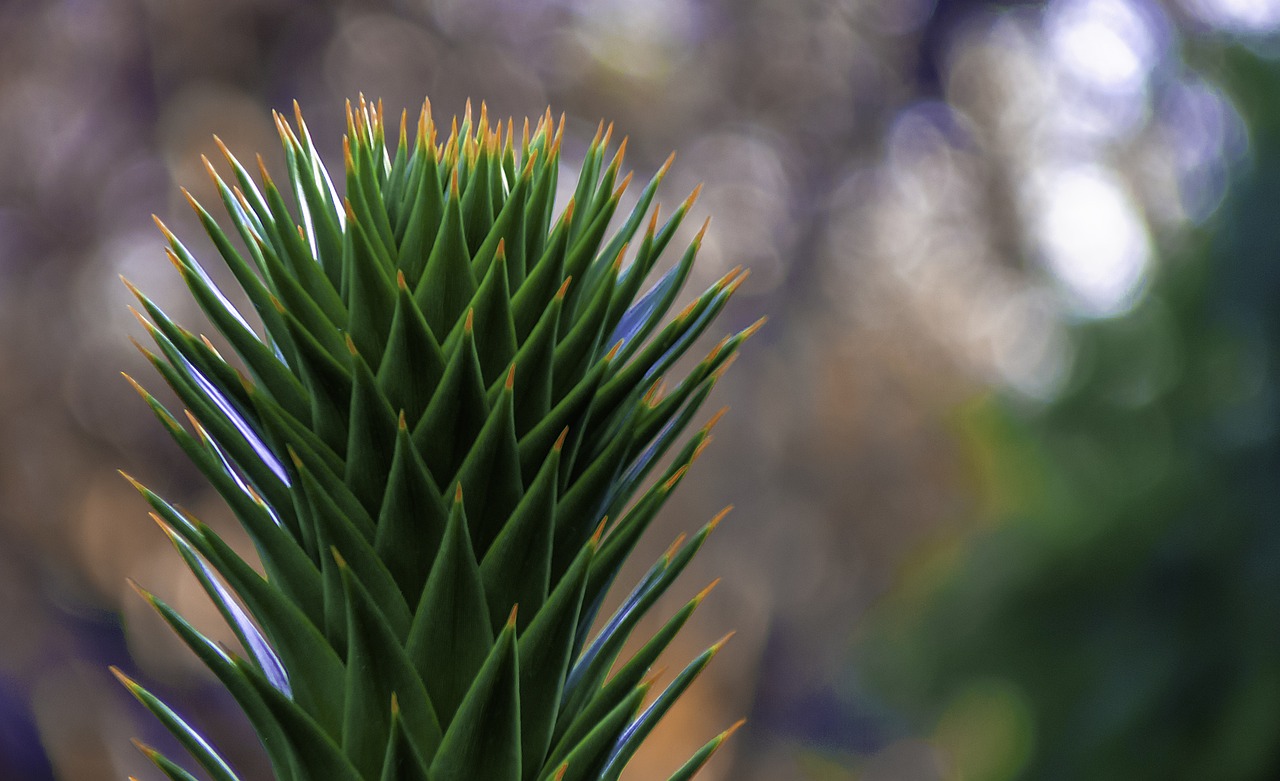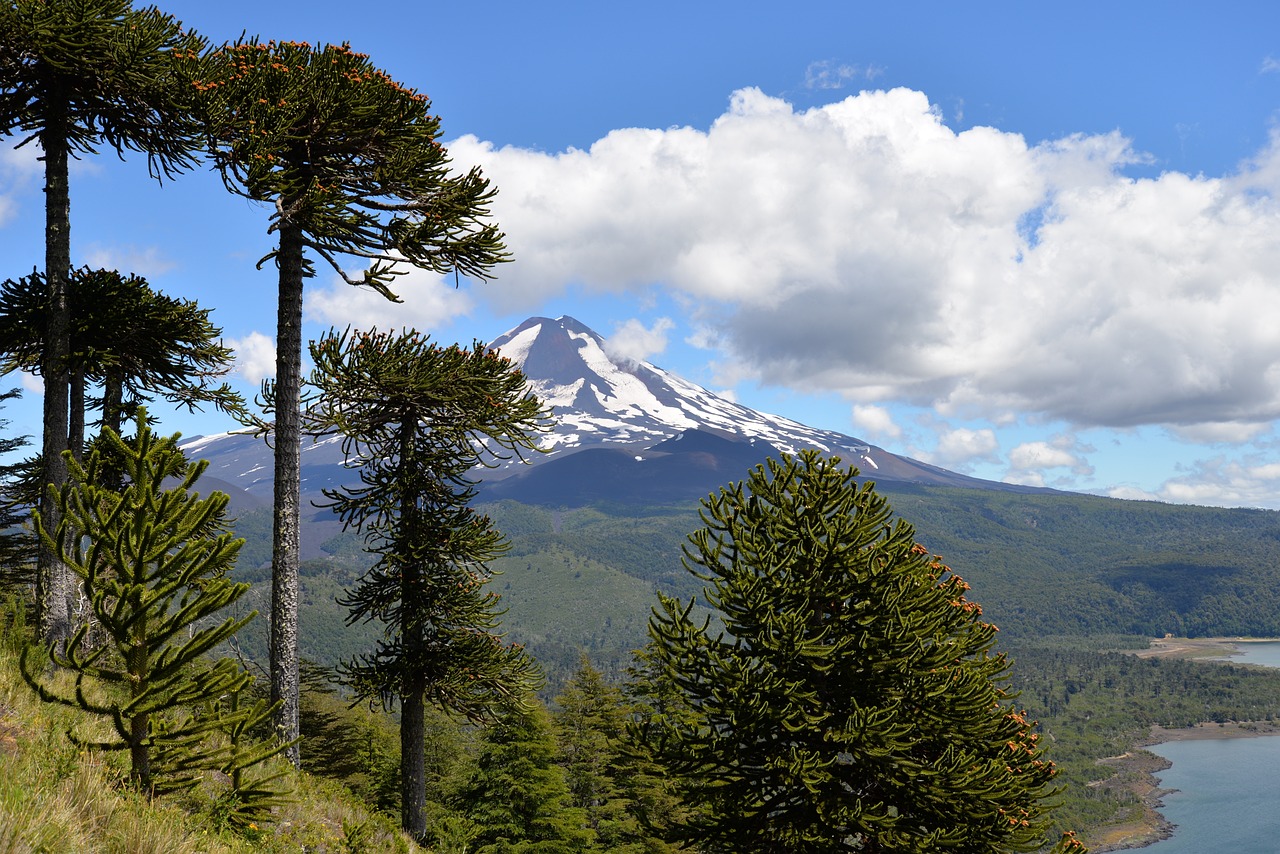IDENTIFICATION of Araucaria araucana
Scientific name:
Araucaria araucana
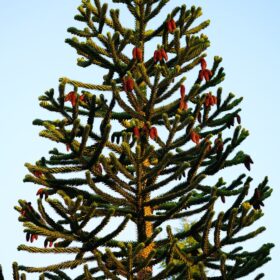
Italian common name:
Chilean or Paranà pine or Monkey tree
Family:
Araucariaceae
Origin:
Cile centrale e Argentina centro occidentale
Environment:
Its natural environment is the slopes and plateaus of the Chilean and Argentine Andes, in particular above 1000 m, in regions characterized by large winter snowfalls but also Australia, Norfolk Island, New Caledonia and the of New Guinea.
Evergreen or deciduous:
Evergreen
Toxicity:
not
PLANT RECOGNITION of Araucaria araucana
Height: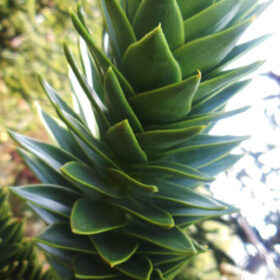
In its areas of origin, the Araucaria araucana reaches 30-50 m in height, with trunks up to 2.2 m in diameter, although the average is around 25 m in height, with trunks of 1 m in diameter . (1.5 to 10 years)
In Italy it can reach a maximum of 15-20 m; however, this is a height that is anything but negligible.
Width (extension):
7-10 m.
Habit:
wide and regular conical shape. The branches are, at a young age, arranged horizontally and the plant takes on a conical shape. In adulthood, however, the plant takes on a characteristic more rounded shape and the lower branches point downwards.
Leaf:
The leaves are thick, hard and pointed, triangular in shape, 3–4 cm long and 1–3 cm wide at the base, with the edge as sharp as a razor. They remain on the tree for 10-15 years and cover most of the tree except for the oldest branches.
Flower: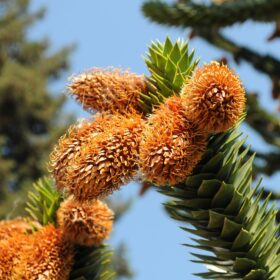
Inflorescences similar to large pine cones that are produced on specimens that are at least 30 years old. dioecious plant, with male and female sporophylls located on different plants, although specimens with both are known.
The female cones are rounded, isolated and located at the terminal part of the branches.
The male cones are gathered in groups and are also placed at the top of the branches.
Like all conifers, pollination occurs via the wind. The female sporophylls are gathered in spherical inflorescences. When pollinated, they produce large fruit, 12–20 cm in diameter with seeds similar to large pine nuts at the base of each scale. The strobilus can contain up to 200 seeds: in nature it disintegrates at maturity to release the seeds which are then dispersed by animals.
Fruit:
The fruits are globose, erect cones, they are very large, almost like a balloon and each contains up to 200 seeds, which are dispersed only when (in autumn) the cones, once ripe, fall apart. This can happen on the tree or, more frequently, when they fall to the ground, and they are so heavy that they can even break the branch that carries them.
The edible seeds are produced at intervals of 3-4 years.
Trunk: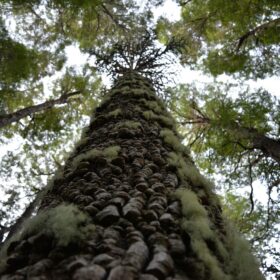
gray and wrinkled bark, very thick.
Property:
“The pine nut is the seed of the Araucaria araucana. It is an extremely nutritious seed that represents the staple food of the Mapuche communities of southern Argentina and Chile, who consume it cooked or toasted. (from Fondazioneslowfood.com)
If you want to learn more about this topic go here.
Perfume:
not
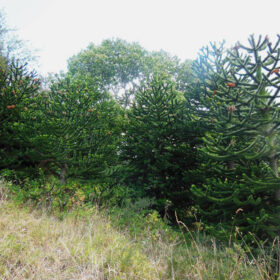
NEED
Maintenance:
Low
Light Exposure:
sunny place sheltered from the wind.
Soil type:
better acidic and well drained
Soil acidity:
pH 6 / 6.5
Italian climatic area: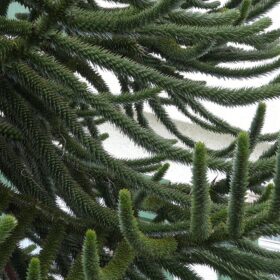
it lives very well in the northern regions, especially where the winters are cold, and the summers are not excessively hot, with good rainfall; in all other regions these trees tend to adapt very well; only that this adaptation often affects the lifespan of the trees, which typically do not become centuries-old if planted in Italy.
Need for water:
young plants must be watered regularly, but as adults it can also tolerate long periods of drought. However, pay attention to the new summer climatic situations which may require some watering.
Propagation:
Being a plant with female and male specimens on different plants, pollination is required which is not within everyone’s reach. It can also be multiplied by cuttings.
Diseases:
rarely they can be affected by aphids or scale insects. More often, excessive watering is enough which causes root rot and fungal diseases such as Armillaria or very prolonged periods of drought.
Pruning:
only damaged or dead branches.
SPECIAL FEATURES: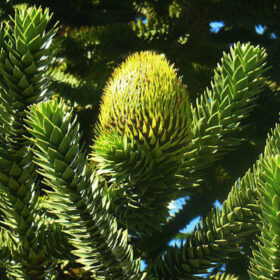
The common name monkey tree derives from the English name Monkey-puzzle tree given because the intertwining of the branches “would have considerably confused a monkey who wanted to climb the tree”. This phrase would actually have been uttered in Cornwall by a friend of a plant owner. However, since a monkey could not climb the tree without being injured by the thorns and since there are no monkeys in the natural environment of the plant, the Anglo-Saxons now prefer to call it pehuén, the original name in the Mapudungun language.
The weight of the snow often breaks the older branches so the tree maintains only a small canopy of new branches on a column-like trunk: a posture quite different from the conical shape it takes in temperate gardens.
Notes:
Discovered in Chile around 1780, it was called Pinus araucana by Juan Ignacio Molina in 1782. In 1873, Karl Koch published the combination Araucaria araucana, making Molina’s name valid in the new genus.
Very slow growing plant. In 10 years it reaches 1.5 m. in height.
Many “populations” of araucaria are what remains of vast forests that were widespread in ancient times. These columnar trees, in fact, are living fossils dating back to the beginning of the Mesozoic era.
Araucaria “Pine Nuts” are also useful for feeding goats, pigs and cattle during the winter. Furthermore, natural pale pink dyes can be made for wool yarns to be woven on Mapuche looms.
In the kitchen:
Araucaria “pine nuts” (in the female inflorescences) can be eaten fried, raw and cooked.
Fermented drinks are also produced with pine nuts and numerous recipes are prepared such as purees, cazuela (a traditional soup), empanadas (stuffed dough parcels), sopaipillas (fritters)” (fromfondazioneslowfood.com)
THE MONDO DEL GIARDINO ADVICE
The Araucaria araucana are in danger of extinction in their places of origin and are therefore protected by international conventions, for this reason only specimens coming from cultivation and not taken from the wild can circulate in Europe.
Now on horseback! Work awaits us! Our new wonderful outdoor space is about to be born!
GOOD WORK and…if you have any questions, write to info@ilmondodelgiardino.com
Image sources: thanks to Pixabay and many thanks to Ralf Michel for the photo for social media, Michael Treu for the cover photo, Hans, Actaplantarum.org, WikimediaImages, Patricio Hurtado, Actaplantarum.org, Hans, Actaplantarum.org, Patricio Hurtado for the closing image.


